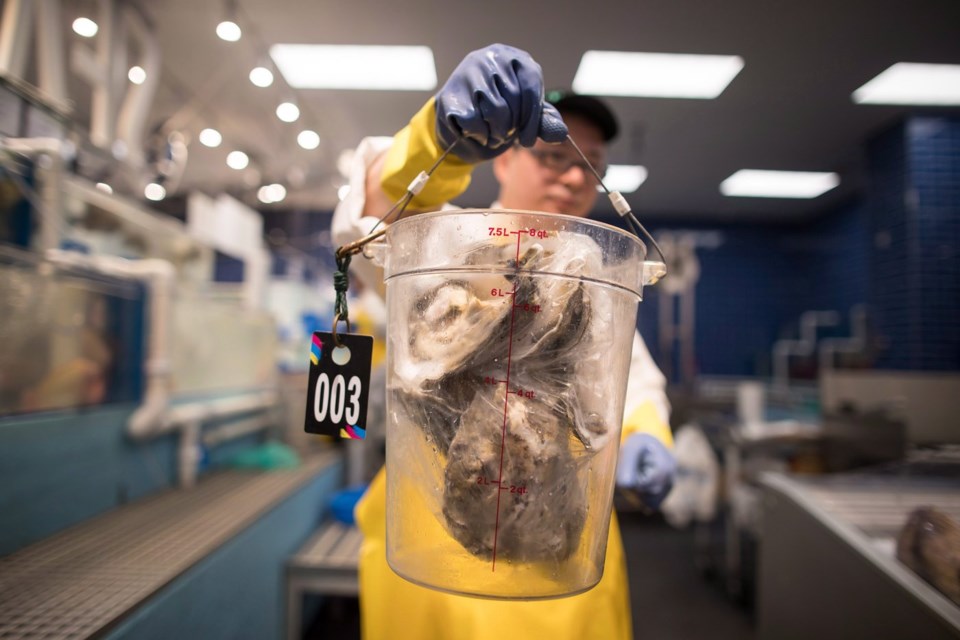CHARLOTTETOWN — The Canadian Food Inspection Agency has confirmed the further spread of a parasite threatening Prince Edward Island's lucrative oyster industry.
The agency recently updated an online map, showing new detections in and around East River and Rustico, and all of Malpeque Bay. More recent detections have been reported from Rice Point to Wood Islands on the Island's south shore, and from North Rustico Harbour to Brackley Point along the north shore.
"Our surveillance efforts currently focus on those areas that have not yet been tested," the agency said in a statement released Tuesday. "The … agency is meeting regularly with the province, stakeholders and industry members about the long-term management of the disease for P.E.I."
According to provincial statistics, the Island's oyster industry hauled in 10 million kilograms of oysters last year, generating almost $24 million in revenue. It's the province's third-most lucrative seafood business, behind mussels at $29 million and lobster well ahead at $298 million.
So far, the presence of the parasite hasn't had much of an impact on the oyster industry, but that could change in the months ahead.
Peter Warris, executive director of the P.E.I. Aquaculture Alliance, says the parasites can be in an area for a number of years without causing any issues, but he confirmed Tuesday that oysters are already dying in Bedeque Bay along the Island's south shore.
The parasite, known as MSX — short for multinucleate sphere X — reduces the lifespan of oysters but poses no risk to human health, which means they remain safe to eat.
"(P.E.I.) oysters remain safe, nutritious and delicious," the provincial government said in a recent statement.
Typically, the parasite kills oysters that are at least two years old, with mortality rates as high as 95 per cent within two to three years of the initial infection.
On July 20, the agency declared a "primary control zone" for the area in and around Bedeque Bay, which means oysters cannot be moved within the zone or removed from it without a permit, and that restriction also applies to boats, equipment and marine plants that have been in contact with oysters.
It was the first time MSX had been detected in P.E.I. The control zone has since been expanded to several other areas.
The inspection agency says MSX was previously found in Nova Scotia and British Columbia. It has also been found from Florida to Maine, where the oyster industry has spent years adapting to the parasite.
Meanwhile, the presence of the parasite is not expected to have much of an impact on the sale of P.E.I. oysters to foreign buyers because the majority of Canada’s oyster-importing customers do not have any rules concerning MSX when the oysters are meant for human consumption.
"While we can’t say with 100 per cent certainty, trade impacts are expected to be minimal," the P.E.I. government said in a recent statement. "MSX is not required to be reported to the World Organization for Animal Health and is not a reportable disease in the United States."
Along the U.S. eastern seaboard, the oyster industry has been unable to eradicate the organism, but those in the business have learned to adapt by breeding oysters that can tolerate the pathogen, Warris said.
"There are many successful oyster industries that have continued to operate and thrive in MSX-positive areas," Warris said. " It is not, by any stretch, the end of the P.E.I. oyster industry. It will be adaptation . … Native populations will eventually develop tolerance."
In August, the federal fisheries department committed up to $1 million over the next two years to study the parasite.
This report by The Canadian Press was first published Oct. 1, 2024.
— By Michael MacDonald in Halifax
The Canadian Press




